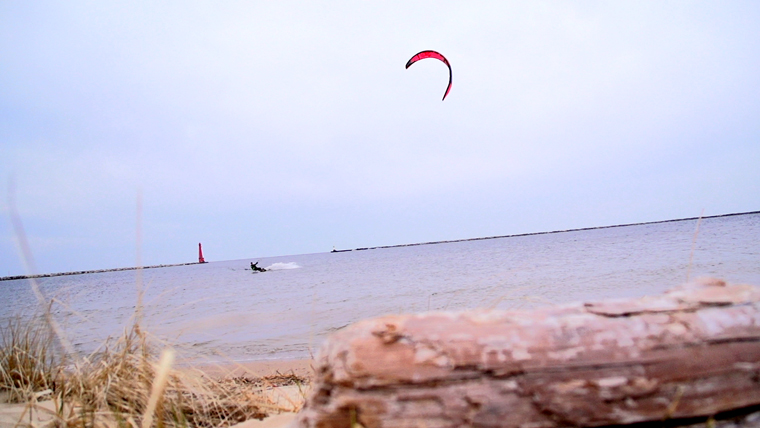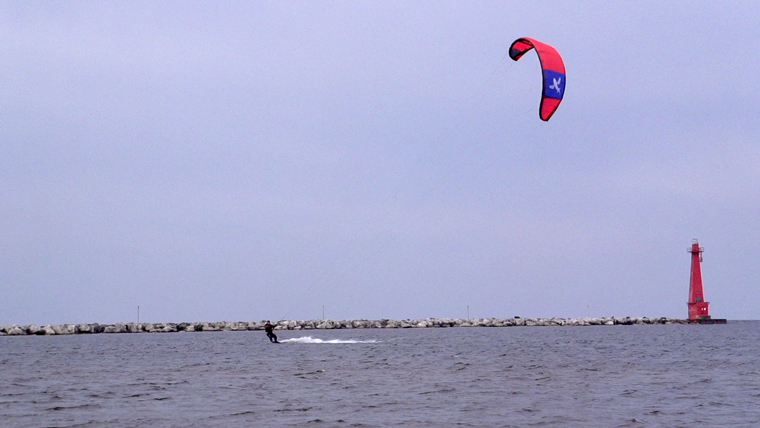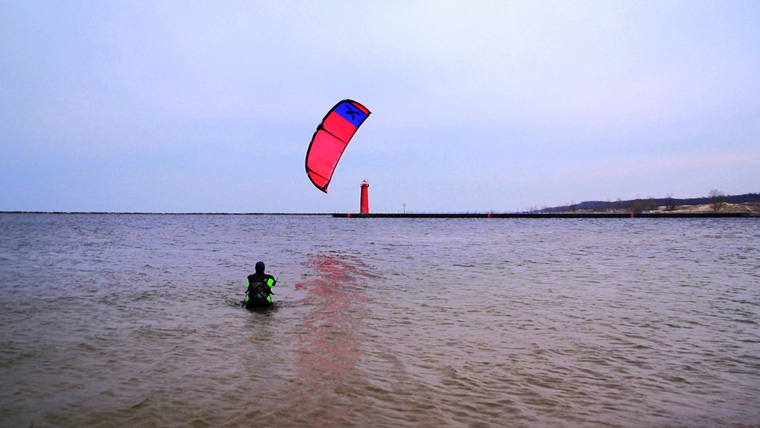Let's Chat: Jake V Reviews 2016 Best Roca

So I have been asked by several of our staff, “Why the Roca?” Well, it is basically quite simple. I have flown the Best TS 17 almost exclusively for the past 3 years and while I liked, more like loved, the 17 TS, I was always riding the 12m on the wakestyle setting to slow the kite down. The Roca was said to be a little slower and more stable. And since I am really just a freerider who rides to relieve stress and be on the water with friends rather than trying to throw down handle passes and powered wakestyle tricks, I figured why not give the new Roca a shot since it is Best’s new freeride specific kite. So, I ordered up a 17, 14, 10 quiver. To be honest with you, I wanted to hate the Roca and go back to the TS even before my first session. After all, It’s just going to be a rebranded Kahoona, right?
Last week I was finally able to get out on the 1 4m Roca, and the best thing I can say about it is it is not a Kahoona. You see, no one on our staff really liked the Kahoona. It wasn’t a bad kite, there were worse kites on the market, but it definitely wasn’t a kite that stood out of the crowd and said, “Hey, look at me I rock at ‘X’.” I am glad to say the 14m Roca didn’t have that feeling at all. It did a few things really well and that is what I want from it. Lofty jumps, stable, and the able to keep my 260-pound butt upwind (that isn’t asking for much, right?) Now with that said, if you currently ride the Kahoona I believe you will love the Roca. It turns a little faster, is way more stable, and the Kahoona back stall is now a non-issue. However, it does not feel much like a Kahoona after all.

So, what were the conditions like when I was out? I was flying in the 16-22 range; most of the time it was 20-22, so pretty steady. And 17-18 is just about what I was looking for on the bottom end of the 14m for my size (260lbs). Even when the wind dipped down to the 16-17 towards the end of my session I was able to stay upwind and to me that is half of my battle with light wind riding.
The Roca is more of a medium aspect kite and it flies a little more forward in the window compared to the Kahoona, making it an efficient design for upwind riding. It’s not quite as far forward in the window compared to the TS, so it will feel a little more grunty and a bit more stable when it is overflown or when you ride underneath it. The grunty feeling could be a combination of the kite sitting a little further back in the window and the heavier bar.
One thing that I am still on the fence about is the bar pressure. While I hear it is a little lighter than the Kahoona, it is a little heavier that the TS. I am not going to check this one off as a negative quite yet since it is not that significant, more or less something that I noticed. The slightly heavier bar pressure allows for you to really feel where the kite is in the sky without looking at your kite, which can be a huge bonus for newer riders. I would compare the bar pressure to that of the newer Cabrinha Switchblades. Only without the Cabrinha softness in their bar, the Roca still has a bit more of a direct feel. This results in feeling the gusts a little more in the bar. I am hoping to get out in more gusty conditions to see how the Roca handles. Keep in mind bar pressure is not the same thing as the steering input. In that sense, the pressure/force needed to get the Roca to turn was pretty light and while it may not be as fast as the TS, I would say it is a little faster than the Cabrinha Switchblade.
What I liked the most was jumping the kite. Since it was my first session of the season and the was was still in the upper 30s I was being pretty conservative, but what I can tell you is the kite loves to hangout in the sky. The jumps seemed to be much more floaty when compared to the TS; not quite at fast of an elevator ride up, but once you got to the apex of your jump you seem to just glide back down giving you lots of time to grabs, rolls, or saying hi to the cute ladies watching your mad style from your local piers & beaches. The extra hang time will be a little bit of an adjustment since the Roca is not quite as fast as the TS so you have to reposition the kite a little sooner in order to not tea bag yourself upon landing, and 38-degree water is not a good time to figure out your timing is way off, trust me. I am looking forward to going big this summer and even messing around with some board off Airstyle trickery!

All in all, I have given the Roca a warm welcome into my quiver of kites and feel as though it would be a great kite for beginners all the way up to advanced freeriders and intermediate wakestyle riders. Advanced wakestyle guys stick with the TS or something similar. While I believe the Roca could handle its own for intermediate wakestyle riders, with an advanced rider it would kind of be out of its main comfort zone and the limitations of its design would become more apparent. While the Roca could be classified as a crossover freeride/freestyle kite, it definitely leans a little more towards the freeride style of riding. I would put it in a similar class as the Liquid Force Envy and maybe even the Cabrinha Switchblade.
After my session, I had a chance to catch up with Kevin, our Best Rep, and here are a couple tuning tips he recommended trying:
“...couple of adjustments to try: I believe your kite came in the 1st shipment which means that it has 2 knots on the back lines. You can add a 3rd knot closer to the kite to speed it up a bit. It won't back stall on this setting. Also, the kite comes set in the middle for turning speed. You can put both attachments of the rear bridle on the wingtip knot. This will give a bit more of a direct feel and speed the kite up slightly...”
I am looking forward to hitting the water again with the Roca and the new tuning settings. Hope to see you on the water and if you are wanting to give the Roca a try and you live locally stop by the Shop or stop me at the beach and I will hook you up! #RocaRides
Click to learn more or purchase a Best Roca today!
Recent Posts
-
Kiteboarding | Crafting the Harlem Force Kite with Sustainability and Performance
Unparalleled Performance Meets Unmatched Sustainability The kiteboarding industry is on …24th Apr 2024 -
Duotone Ventis 2025 | What's New?
If you're familiar with Duotone's Ventis, you know its specialty is freeriding in light wind …23rd Apr 2024 -
Duotone Ventis D/LAB 2025 Overview
If you ride in an area with multiple light wind days and need a wing that'll let you get o …23rd Apr 2024



